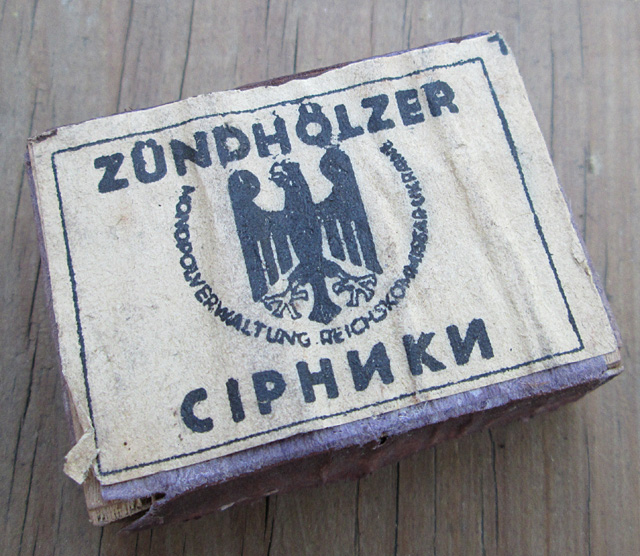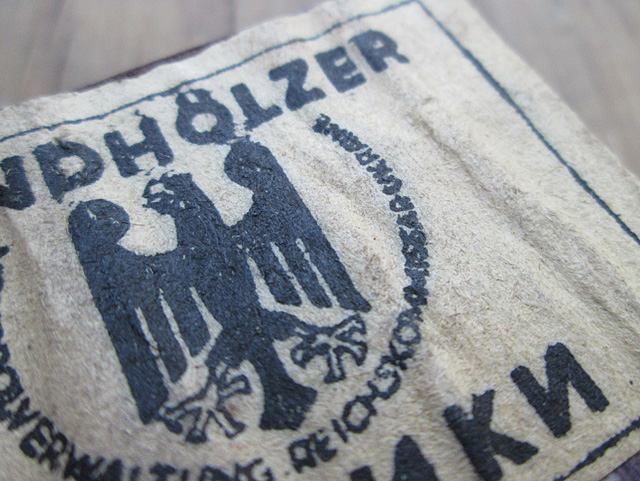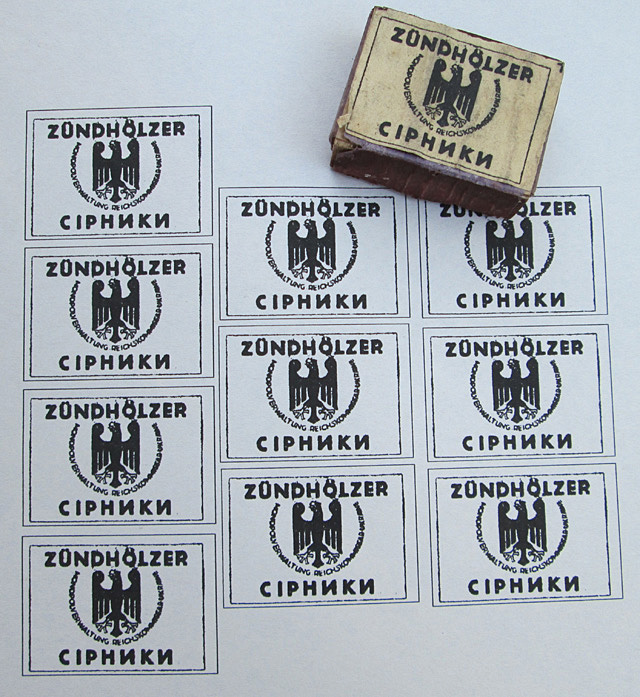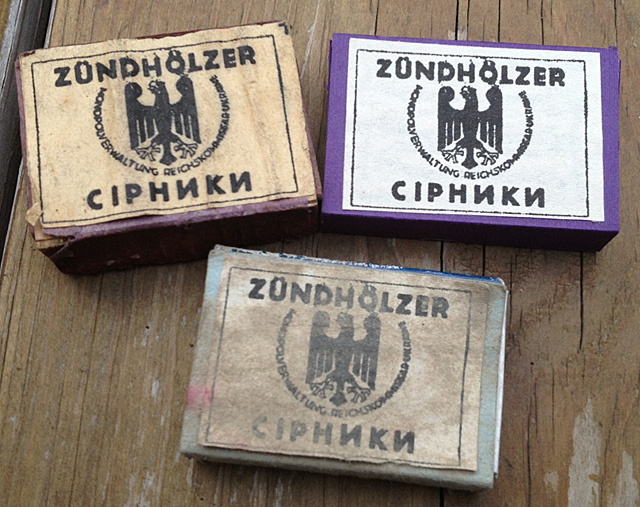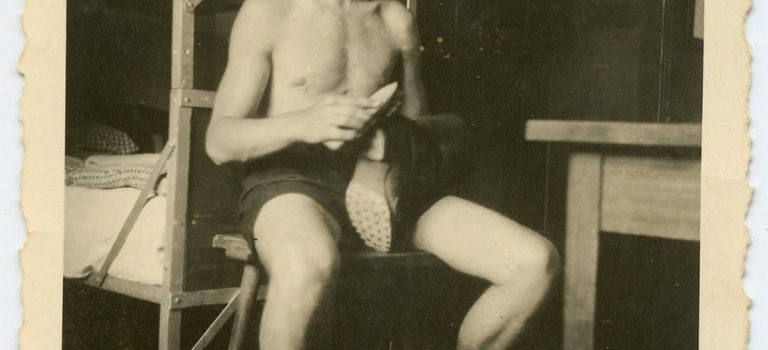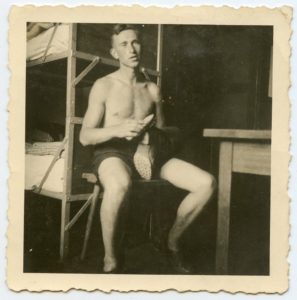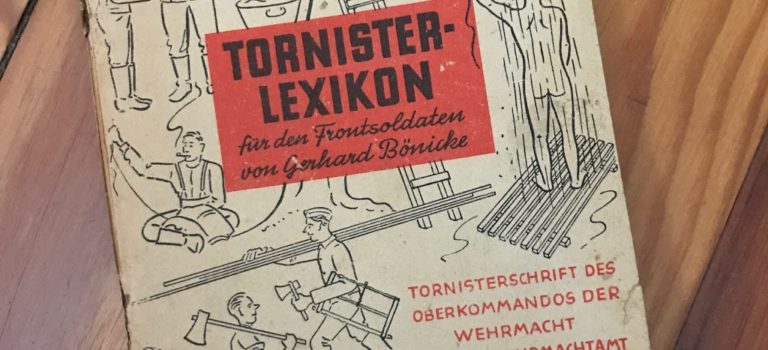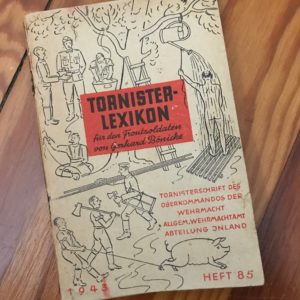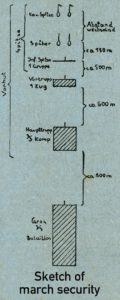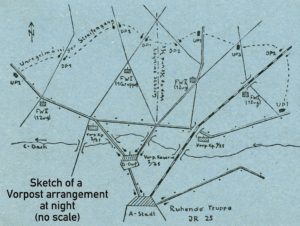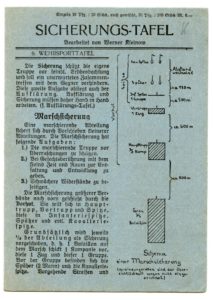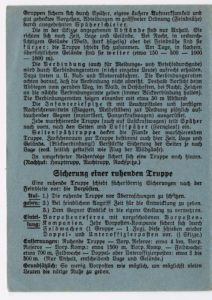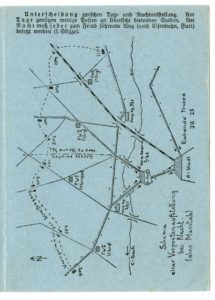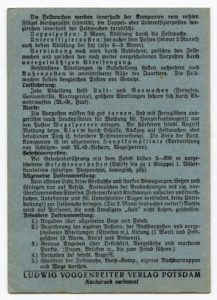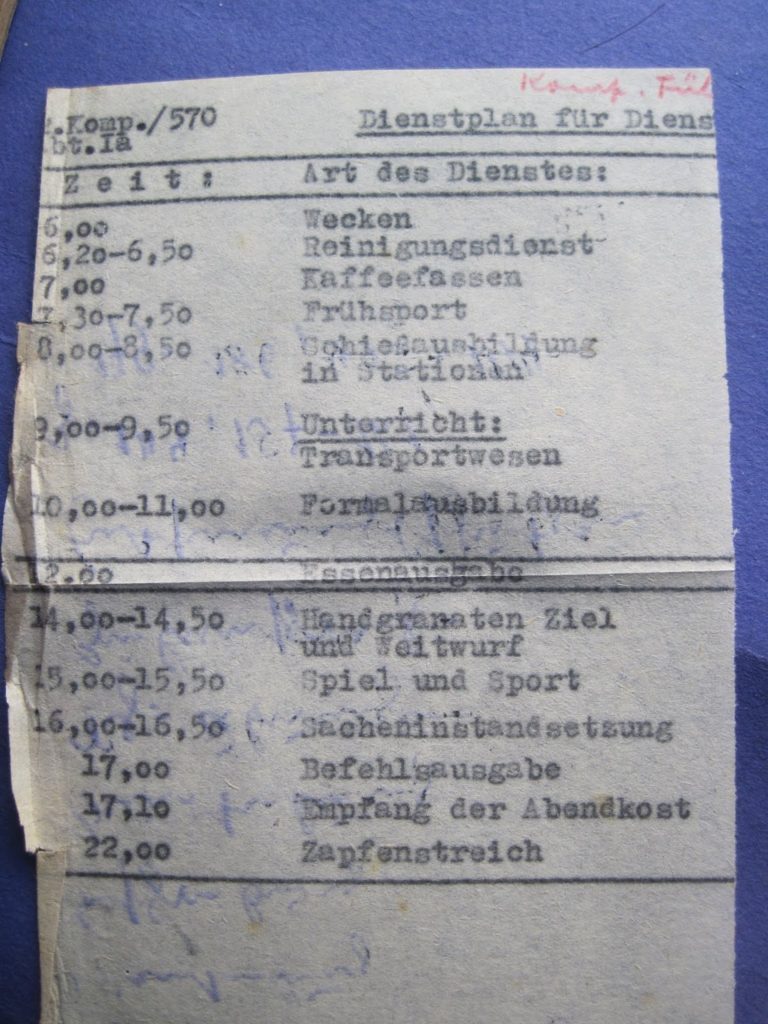Sicherungs-Tafel
Arranged by Werner Kleinow
6. Wehrsporttafel
The Sicherung protects the entire unit from enemy ground observation and hinders unexpected encounters with the enemy. This second task also falls to the Aufklärung. Aufklärung and Sicherung must therefore work together hand in hand. (see Aufklärungs-Tafel)
Marschsicherung
A marching detachment provides for its own security by advancing a smaller detachment. Security on the march has the following tasks:
1. Protecting the marching unit from surprises
2. In contact with the enemy, giving time and space for expansion and deployment
3. Crushing weak resistance
The forward march security of larger units is achieved by the Vorhut. The unit divides itself into the Haupttrupp (main unit), the Vorhut (forward unit), and the Spitze (foremost elements), this is divided into the Infantry Spitze, Späher (reconnaissance troops), and if applicable, the cavalry Spitze.
As a rule, one third of the detachment is dedicated to security, meaning that 1 Bataillon on the march sends forward one Kompanie, this Kompanie sends forward one Zug and the Zug sends forward one Gruppe. In front of this Gruppe is situated the Späher (2 men) and the cavalry Spitze. Advancing patrols and Gruppen are secured by Späher, their own external attentiveness and well covered advance. Detachments in open order (contact with the enemy) are secured by an extended network of Späher.
The distances in the sketch are just an indication. They can vary depending on time, situation and terrain. At night, in terrain with poor visibility (forest, very hilly) or close to the enemy, they will be shorter; units will determine this themselves. During the day, in flat terrain with good visibility, they can be longer (about 150 – 500 – 1000 – 1800 m).
Connections between the elements (also for distribution of reports and orders) is correctly achieved by connecting detachments (not individual people). For this are used, circumstances permitting, cyclists and motorcyclists. The connecting detachments make sure that the connections are maintained. They therefore must use caution at bends in straight roads, in woods, in towns, and at night; they must signal to the next connecting detachment (always maintain visual contact). The connecting detachments follow each other at a distance of about 50 meters.
The Infantry Spitze is equipped with flare pistols and other signaling equipment (flags, report poles) for reporting suddenly appearing enemy units (motorized and armored units).
Every marching unit (also on trucks) sends Späher forwards, to the sides and also for aerial observation (binoculars!).
Späher units that are sent to the sides cover the flanks of the marching unit. The distance between the units is determined here also by time, situation and terrain. (Visual contact!) Strengthen the security at the sides depending on the situation (even arranged sideways like a flight of wild geese).
In reverse order the troop is protected from the rear. (Nachhut (rear guard): Haupttrupp, Nachtrupp, Nachspitze.)
Security of a resting unit
A resting unit arranges a fan-shaped security towards the enemy: the Vorposten.
Tasks:
1. Protecting the resting unit from surprises
2. In the case of enemy attack, giving time for deployment.
Arrangement:
Vorposten reserve with pushed-forward Vorposten Kompanien. Every Vorposten-Kompanie protects itself with Feldwachen (1 Gruppe – 1 Zug), these send forward Doppelposten and Unteroffizierposten (see sketch).
Distances: Resting unit to reserve Vorposten, about 4 km; Vorposten reserve to Vorposten Kompanien about 1500 m; Vorposten Kompanien to Feldwache about 700 m; Feldwache to Doppelposten or Unteroffizierposten, about 200-300 m. (Only an indication, depends on situation and terrain.)
As a rule: As few Vorposten as possible, in order to give the maximum number of people the necessary rest.
Differences between daytime and nighttime arrangements. In the day it is sufficient to have just enough sentries to observe the positions. At night, every road leading to the enemy (also railways and river fords) must be occupied (see sketch).
The Feldposten are numbered within the Kompanien from right to left using Roman numerals. The Doppelposten or Unteroffizierposten are numbered the same way within each Feldwach, in Arabic numerals.
Doppelposten: 2 man sentry teams, relieved by the Feldwache.
Unteroffizierposten: has in addition to the sentries (always 2 men!) also their own relief with them (6-8 men).
Connection forward is maintained by cyclists, connection between the Feldwachen and between the further pushed forward Vorposten is maintained by irregular patrols.
Detachments in closed order in rest positions additionally place outposts in the vicinity of their quarters. The Feldwachen similarly position sentries with rifles.
Aerial security: Every detachment positions aerial guards and gas guards (binoculars, sunglasses, alarm equipment), larger detachments are protected by defensive weapons (machine guns, anti-aircraft cannons).
Notes: The Vorposten must camouflage themselves well, are equipped with binoculars (also flare pistols for reporting enemy armored vehicles); roadblocks are deployed in front of the sentries. In case of strong enemy attack, report or alarm by shooting, retreat from the Feldwachen or ordered positions (see special sentry instructions). The line of the Vorposten-Kompanien is in general the main battle line (preparation of rifle and MG positions, roadblocks).
Battle Vorposten (Gefechtsvorposten): In contact with the enemy Gefechtsvorposten pushed forward 2-300 m (strength up to 1 Gruppe) make up the first line of resistance (frequent change of positions, mobile, tough).
General Sentry Instructions: No open light, no sounds or strong movements, sitting and laying down only when ordered. Exchange observations with friendly passing patrols. Wagons and vehicles are to be stopped and searched, unknown persons and enemy negotiators (blindfolded, no conversation!) are brought to the Feldwache. (The second man continues to observe!) At night, any person who does not stop after being ordered “Halt!” 3 times is to be shot.
Special Sentry Instructions:
1. Furnish information about the general situation and enemy.
2. Designation of their own sentries, the neighboring sentries and pushed forward detachments (patrols, etc.) password (1 word) and field password ( 2 words, call and response).
3. Exact information about the area, the terrain ahead and landmarks. (Passes, bridges etc. leading to the enemy).
4. Stopping of enemy attacks.
5. Location of the Feldwache, Vorposten-Komanien, the neighboring friendly units and the routes there.
[Below: the complete original text of the Sicherungs-Tafel, in its original format. For more detail on this subject from a military manual refer to
The Gruppe as Feldwach.]
